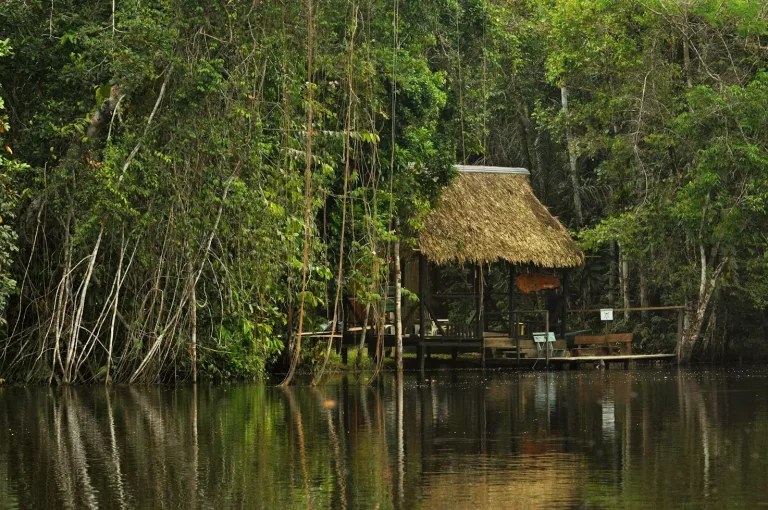An explosion of life from the heart of the planet
Amazon (BOL – BRA – COL – ECU – PER)
The heart of South America
The Amazon rainforest is the world’s largest tropical rainforest, covering an extensive area of approximately 5.5 million km2. It expands in 9 countries, including Brazil, Peru, Colombia, Venezuela, Ecuador, Bolivia, Guyana, Suriname and French Guiana.
The Amazon rainforest is a vital and ecologically significant region known for its incredible biodiversity and environmental importance.It is home to an astonishing variety of plant and animal species. It is estimated to contain around 10% of the known species on Earth. This diversity includes jaguars, sloths, monkeys, various bird species, and a wide range of plant life.
The Amazon plays a crucial role in regulating the Earth’s climate. It is often referred to as the “lungs of the Earth” because it absorbs large amounts of carbon dioxide and produces oxygen through photosynthesis. Its influence on global weather patterns and its role in mitigating climate change are of global significance.
The amazon region is not only one of the most biodiverse ecosystems in the world , but it is also a rich region in terms of ancient traditions and wisdom maintained by its indigenous communities. These communities live in perfect harmony with the nature and the wildlife around them. Some of them prefer to stay in areas of difficult access for us, while others prefer to live in villages where they produce handcrafts and show some of their traditional activities and rituals to visitors.
The conservation of the Amazon is of global concern due to its critical role in mitigating climate change and its unique biodiversity. Efforts to protect the Amazon continue to be a subject of debate and action on a global scale.
Brazilian amazon (BRA)
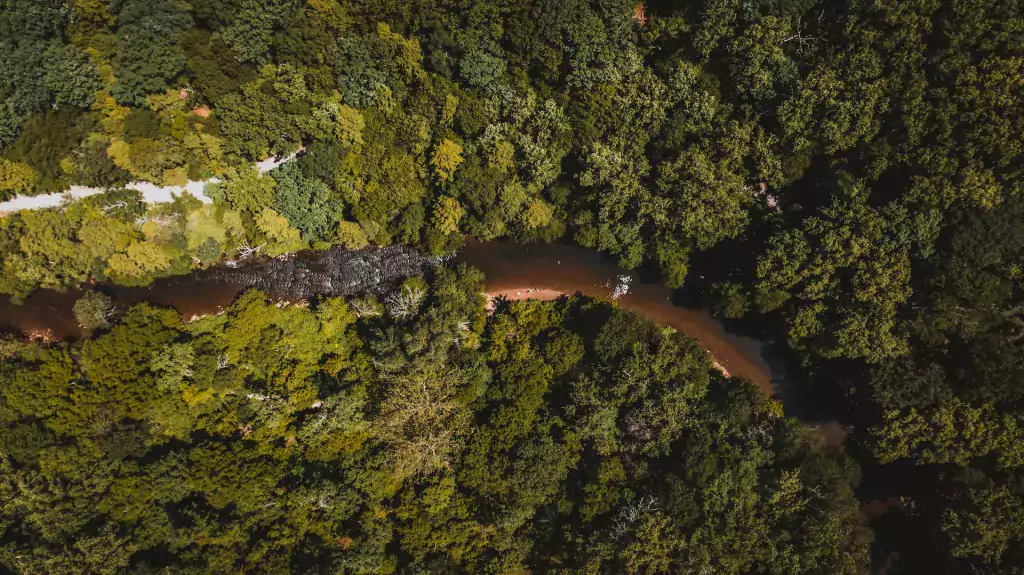
The Brazilian Amazon stretches across the Brazilian states of Amazonas and Pará, and it is home to unique species such as the Amazonian manatee, toucans, and Macaws. The Brazilian Amazon includes vast regions, with notable cities like Manaus and Belém situated within its boundaries. The Amazon River, the lifeline of the rainforest, flows through these regions. Boat tours from Iquitos in Peru, to Manaus and Belém in Brazil, offer an immersive experience of the rainforest´s natural beauty. These boat tours navigate through the intricate network of rivers, such as the Amazon, Negro and Madeira, allowing visitors to witness the diverse flora and fauna, including species such as jaguars, pink dolphins, and anacondas. These tours provide an unforgettable adventure and a deeper understanding of the importance of preserving this remarkable ecosystem for future generations. The Brazilian Amazon has faced significant deforestation and environmental challenges due to logging, agriculture, and infrastructure development. These activities have caused habitat destruction, loss of biodiversity, and contributed to greenhouse gas emissions. The Amazon is home to numerous indigenous communities, many of whom have lived in the region for generations. These communities often rely on the forest for their livelihoods and play an essential role in its conservation. Efforts to protect the Brazilian Amazon and its unique ecosystems have been ongoing for years. Various organizations, governments, and environmental activists work to combat deforestation and promote sustainable land use practices in the region. The Brazilian government has established protected areas, reserves, and national parks within the Amazon to safeguard its natural resources and biodiversity. Despite these protections, illegal logging and land use practices have remained significant challenges.
What to visit?
Manaus is a city located in the heart of the Amazon Rainforest in Brazil. It is the capital of the state of Amazonas and serves as an important cultural, economic, and transportation hub in the region. Manaus is situated in the northwestern part of Brazil, near the confluence of the Negro and Solimões rivers. The city is located deep within the Amazon rainforest and is surrounded by lush vegetation. The city of Manaus has a rich history, particularly during the late 19th century when it experienced a rubber boom. At the height of the rubber boom, Manaus was one of the wealthiest and most influential cities in Brazil. Many ornate buildings and monuments from this era still stand today, reflecting the city’s opulent past. The most famous architectural landmark in Manaus is the Amazon Theatre (Teatro Amazonas), an exquisite opera house constructed during the rubber boom era. It is known for its magnificent dome and intricate decorations, which include materials imported from Europe. The theater continues to host cultural events and performances. Manaus is an important transportation hub for the Amazon region. It has a busy port on the Rio Negro and an international airport, making it a key entry point for travelers and goods into the Amazon basin. Manaus is a popular starting point for tourists exploring the Amazon Rainforest. Many visitors use the city as a base for guided tours and excursions into the surrounding jungle, where they can experience the unique flora and fauna of the Amazon. The city is known for its cultural diversity, with a mix of indigenous, European, and African influences. This diversity is reflected in its music, dance, and cuisine.
Alter do Chao
Alter do Chão is a picturesque village located in the state of Pará, Brazil. It is known for its stunning natural beauty, particularly its pristine white-sand beaches along the Tapajós River, which is a tributary of the Amazon River. Alter do Chão is situated in the Amazon Rainforest. It is part of the Santarém municipality and is located near the city of Santarém. The region is characterized by its lush tropical vegetation and clear, warm waters. The village is famous for its beautiful, white-sand river beaches, the most well-known of which is Praia de Alter do Chão. During the dry season, when the water levels in the Tapajós River recede, these beaches emerge, creating idyllic spots for swimming, sunbathing, and water sports. The surrounding area is rich in biodiversity, with a variety of plants, trees, and wildlife. The lush rainforest provides opportunities for birdwatching and nature hikes. Alter do Chão has a vibrant cultural scene, with traditional festivals, music, and dance. The village is known for its unique cultural events, such as the Sairé Festival, which is a celebration of indigenous and local traditions. Alter do Chão has become an increasingly popular tourist destination, attracting visitors who want to explore the Amazon and experience its natural wonders. Tourists can take boat tours, go hiking, or visit nearby communities to learn about the local way of life. Alter do Chão is known for its serene beauty and the opportunity it offers to experience the Amazon in a more relaxed and less commercialized setting compared to other parts of the region. It’s a place for nature lovers, adventure seekers, and those interested in indigenous cultures to explore the Amazon’s wonders.
Peruvian Amazon (PE)
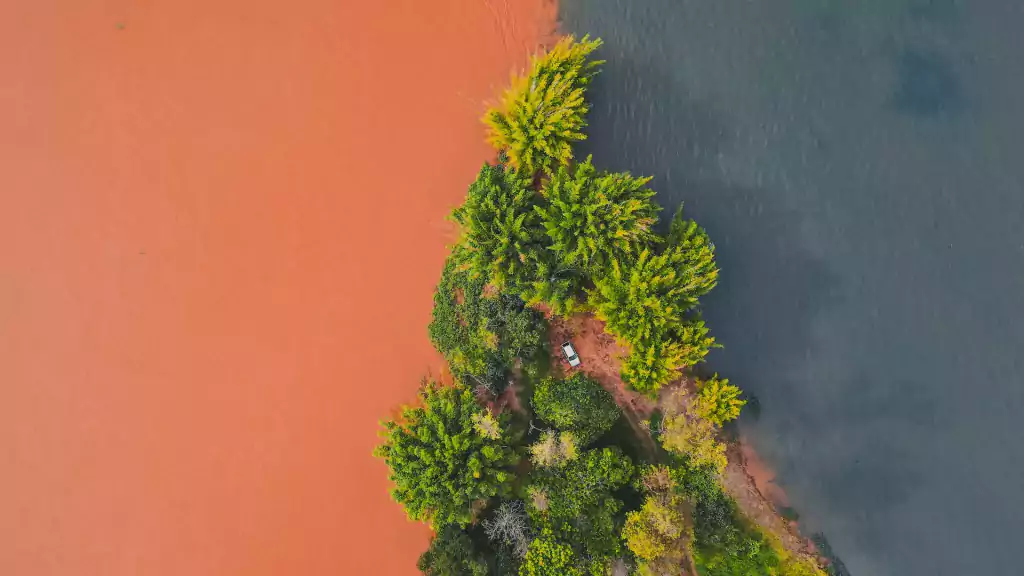
The Peruvian Amazon, characterized by the beauty of the Tambopata National Reserve near Puerto Maldonado. The Tambopata and Madre de Dios rivers meander through this area, where you can spot diverse wildlife such as the black caiman and macaw parrots.
The Peruvian Amazon covers a substantial portion of Peru’s land area, mainly in the northern and eastern regions of the country.
The Peruvian Amazon is renowned for its incredible biodiversity. It is one of the most biologically diverse regions on Earth, with a wide variety of plant and animal species, including jaguars, macaws, river dolphins, and countless species of plants and insects.
Several major rivers flow through the Peruvian Amazon, including the Marañón, Ucayali, and Huallaga rivers, which ultimately contribute to the Amazon River itself. The confluence of these rivers creates unique ecosystems and waterways.
The Peruvian Amazon is home to numerous indigenous communities, many of which have lived in the region for centuries. These communities rely on the forest for their livelihoods, and they play a vital role in preserving traditional knowledge and conserving the rainforest.
The Peruvian government, along with international and non-governmental organizations, is actively involved in conservation efforts in the region. Protected areas, national parks, and reserves have been established to safeguard the unique ecosystems and biodiversity.
Like other parts of the Amazon, the Peruvian Amazon faces threats from deforestation, illegal logging, mining, and infrastructure development. These activities can lead to habitat destruction, loss of biodiversity, and the release of greenhouse gasses.
The Peruvian Amazon has become an increasingly popular destination for ecotourism and adventure travel. Visitors can explore the rainforest, go wildlife spotting, take river cruises, and learn about the traditional cultures of indigenous communities.
What to visit?
Iquitos is the largest city in the Peruvian Amazon, and it’s one of the most prominent urban centers in the Amazon rainforest. It is located in the northeastern part of Peru, in the Loreto Region. Situated on the banks of the Amazon River and is the largest city in the world that is inaccessible by road. To reach Iquitos, you typically have to arrive by boat or plane. Due to its isolated location, Iquitos is often referred to as the “Gateway to the Amazon.” The city is surrounded by dense rainforest. Iquitos serves as a regional economic and commercial hub. It’s a center for trade and services, with industries including timber, agriculture, and fishing. Additionally, tourism has become an important sector, as visitors come to explore the Amazon rainforest. Iquitos is a popular destination for ecotourism and adventure travel. Visitors can take guided tours, go on river cruises, and visit nearby protected areas and wildlife reserves. Iquitos has a unique cultural blend, influenced by indigenous Amazonian cultures, colonial history, and a mix of immigrant communities. The city hosts various cultural events and festivals throughout the year, showcasing traditional music, dance, and art. The city has several interesting landmarks, including the Iron House (Casa de Fierro), designed by Gustave Eiffel, which was shipped to Iquitos in the late 19th century. The city also boasts the Malecón Tarapacá, a riverside promenade with views of the Amazon River. Efforts to protect the Amazon rainforest and the surrounding natural environment are a significant concern for Iquitos and the Loreto Region. Conservation organizations and government initiatives work to preserve the biodiversity and ecosystems.
Puerto Maldonado:
Puerto Maldonado is a city located in southeastern Peru. It is the capital of the Madre de Dios Region and serves as an important gateway to the Amazon rainforest. Puerto Maldonado is situated in the Madre de Dios Region, which is part of the Peruvian Amazon Basin. It is located near the confluence of the Madre de Dios and Tambopata rivers. The city is often used as a starting point for travelers and researchers venturing into the Amazon rainforest. Many lodges, eco-tourism operators, and research organizations are based in Puerto Maldonado, providing access to the rainforest and its unique biodiversity. The Madre de Dios Region is known for its rich biodiversity, and Puerto Maldonado is surrounded by a variety of ecosystems, including rainforests, rivers, and oxbow lakes. This region is home to a wide range of wildlife, including various species of birds, mammals, and plants. Puerto Maldonado has a tropical rainforest climate with high temperatures and humidity throughout the year. The wet season typically occurs from November to April, while the dry season is from May to October. The city is accessible by road, river, and air. The Puerto Maldonado International Airport connects the city to other parts of Peru. River travel is also common for reaching remote areas within the Amazon basin. The surrounding rainforests are important for conservation efforts, and there are several protected areas nearby, such as the Tambopata National Reserve and Manu National Park. These areas are designated to preserve the unique biodiversity of the Amazon.
Bolivian Amazon (BO)
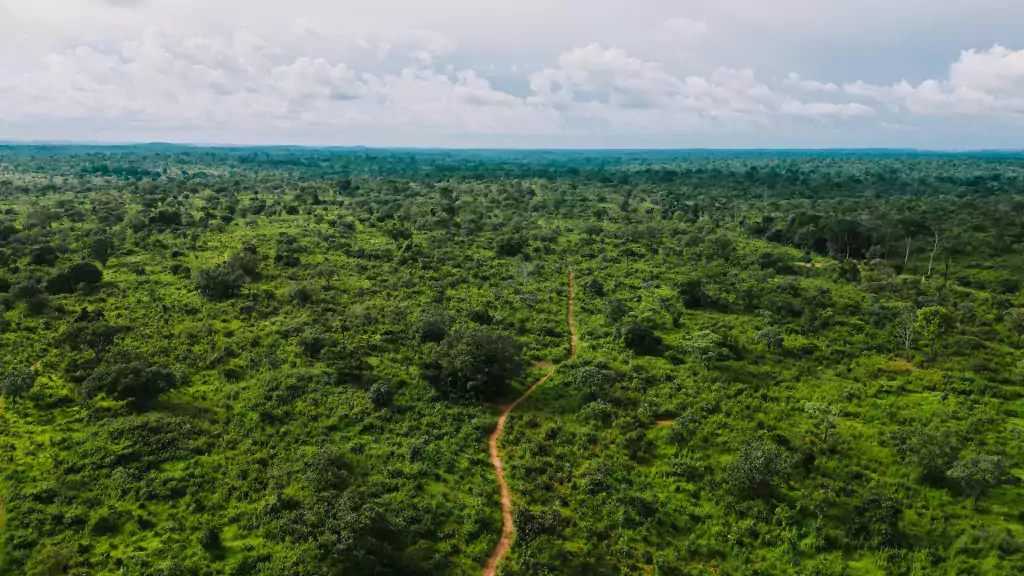
What to visit?
Rurrenabaque is a small town located in the Bolivian Amazon basin. It serves as a popular gateway for tourists and researchers exploring the Amazon rainforest and nearby protected areas. Rurrenabaque is situated in the Beni Department in northern Bolivia, near the confluence of the Beni and Tuichi rivers. It’s surrounded by lush tropical rainforests and is part of the broader Bolivian Amazon. It provides access to several protected areas and national parks, including Madidi National Park, which is known for its incredible biodiversity. Rurrenabaque has become a popular destination for ecotourism and adventure tourism. Tourists come to the town to explore the rainforest, embark on wildlife-watching expeditions, take boat trips along the Tuichi and Beni rivers, and visit indigenous communities. There are numerous tour operators and eco-lodges in the area that cater to visitors seeking an authentic Amazon experience. The surrounding rainforests near Rurrenabaque are known for their diverse flora and fauna. Visitors have the opportunity to spot various wildlife species, including monkeys, birds, sloths, jaguars, and river dolphins, among others. It’s an excellent location for nature enthusiasts and researchers interested in Amazonian ecosystems. The town is home to a mix of ethnic groups, including indigenous peoples such as the Tacana and Mosetén, who have a rich cultural heritage. Travelers can often interact with local communities and learn about their traditional ways of life. Rurrenabaque is accessible by air from La Paz, Bolivia’s capital. Flights to Rurrenabaque are available from El Alto International Airport. The town is also connected by road to the city of Trinidad, and river travel is common for reaching remote areas within the Amazon basin.
Colombian amazon (CO)
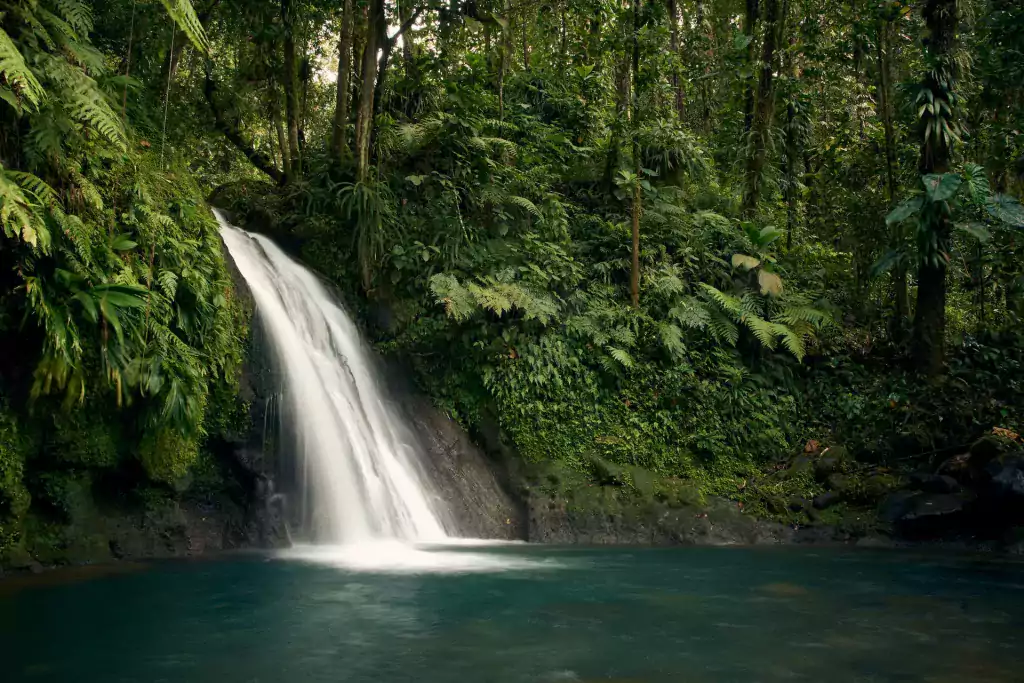
What to visit?
Leticia is the southernmost city in Colombia and serves as the capital of the Amazonas Department. It is situated in the Colombian Amazon, near the border with Brazil and Peru. Leticia is a unique and vibrant city known for its tropical rainforest surroundings and its strategic location at the tri-border area where Colombia, Brazil, and Peru meet. Leticia is part of a tri-border area where three countries (Colombia, Brazil, and Peru) meet. Nearby, you’ll find the Brazilian city of Tabatinga and the Peruvian city of Santa Rosa. This tri-border region has cultural, commercial, and logistical significance. Leticia is a gateway for tourists and researchers exploring the Amazon rainforest. Tourists visit the city to embark on jungle adventures, wildlife-watching expeditions, boat trips along the Amazon River, and to explore nearby national parks and reserves. The Amacayacu National Park and the Tanimboca Nature Reserve are popular destinations for ecotourism and wildlife viewing. The Amazonas Department is home to several indigenous communities, including the Tikuna, Yagua, and Huitoto. Visitors have the chance to learn about indigenous cultures, traditions, and traditional practices in the region. Leticia experiences a tropical rainforest climate with high temperatures and humidity throughout the year. The city is marked by a wet season from November to April and a dry season from May to October. Leticia is accessible by air and river. The Alfredo Vásquez Cobo International Airport connects the city to other parts of Colombia. River travel is also common, as the Amazon River serves as a major transportation route.
Ecuatorial amazon (EC)
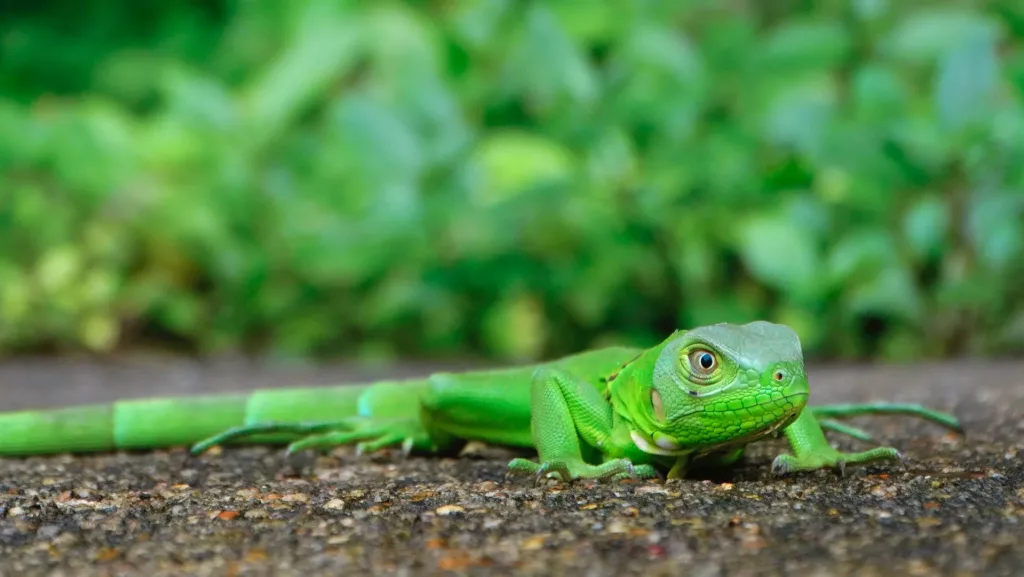
The Amazon Rainforest in Ecuador is located in the eastern part of the country, primarily in the provinces of Sucumbíos, Napo, Pastaza, Morona Santiago, Orellana, and Zamora-Chinchipe.
he Ecuadorian Amazon is known for its rich biodiversity, hosting a wide variety of plant and animal species. This region is home to numerous bird species, monkeys, jaguars, pink dolphins, and other wildlife, as well as a vast array of plant life.
The Amazon in Ecuador is inhabited by several indigenous groups, such as the Shuar, Kichwa, Waorani, and Achuar, among others. These communities have deep connections to the rainforest and depend on it for their traditional ways of life.
Ecuador has established several protected areas and national parks in the Amazon region to conserve its unique ecosystems and wildlife. Notable protected areas include Yasuní National Park, Cuyabeno Wildlife Reserve, and Sangay National Park.
The climate in the Amazon region of Ecuador is characterized by high temperatures and humidity throughout the year. The area experiences a wet season (November to April) and a dry season (May to October).
The Ecuadorian Amazon has become a popular destination for ecotourism and adventure tourism. Tourists visit the region to experience the rainforest, explore rivers and jungles, take part in wildlife-watching excursions, and learn about indigenous cultures. There are eco-lodges and tour operators that cater to visitors interested in the Amazon experience.
Conservation efforts are critical in the Ecuadorian Amazon to protect its unique ecosystems, biodiversity, and the rights of indigenous communities. These efforts focus on preserving the rainforest, preventing deforestation, and promoting sustainable land use.
What to visit?
One of the more biologically diverse areas on the planet, here you can explore the rainforest and encounter rare wildlife species. The Yasuni National park offers a home for many animals and plants. Commonly known are the orchids and the bromeliads. Further inside there are jaguars to see, if you are lucky. More than 100 species of reptiles and amphibians and more than 200 different sorts of trees. The biodiversity and wildlife now face threats from oil exploitation in this rainforest region. Tourism therefore is the sustainable pendant that gives local communities an alternative livelihood and a possibility to preserve nature, wildlife and biodiversity.
Cuyabeno Reserve:
Here you can take tours along the winding rivers of the Cuyabeno Reserve, or you can visit hidden lagoons, and observe wildlife such as Pink Dolphins. It offers spectacular nature, wildlife and bird watching opportunities. The Lodges here are eco-friendly and comfy, but don’t expect any luxuries.
Why people loves nave tours
 NMC2023-04-15A Special Travel Agent During our family's trip to Chile and Argentina from December 2022 to January 2023, Mario Mellado from Nave Tours provided exceptional service. Mario promptly responded to our requests and worked with us to create a customized itinerary that included excellent guides and hotel accommodations. Even when we faced an unexpected airline disruption that required several changes to our plans, Mario quickly responded and efficiently reworked our itinerary. He also ensured that we received eligible refunds for prepaid hotel costs. Mario went above and beyond to make our trip enjoyable, demonstrating a high level of care for our family's needs. Overall, we highly recommend Mario and Nave Tours for their excellent service.
NMC2023-04-15A Special Travel Agent During our family's trip to Chile and Argentina from December 2022 to January 2023, Mario Mellado from Nave Tours provided exceptional service. Mario promptly responded to our requests and worked with us to create a customized itinerary that included excellent guides and hotel accommodations. Even when we faced an unexpected airline disruption that required several changes to our plans, Mario quickly responded and efficiently reworked our itinerary. He also ensured that we received eligible refunds for prepaid hotel costs. Mario went above and beyond to make our trip enjoyable, demonstrating a high level of care for our family's needs. Overall, we highly recommend Mario and Nave Tours for their excellent service. Travelwag2023-03-26I highly recommend NAVE TOURS. I was struggling to book travel to Chile when I came across Chiara on a web search. I was reluctant to book with a company unknown to me, but after meeting face to face via WhatsApp with Chiara, my husband and I felt comfortable booking with her. She made excellent recommendations and saved us from spending time in undesirable locations. Chiara was exceptionally responsive and got back to me in a very timely manner as we worked to put an itinerary together. The 3 weeks went without a hitch. Incredibly all the tour guides and transfers arrived exactly as planned. The tours were all with English speaking guides and excellent. I can’t recommend this company enough. In regards to the payment, Nave suggested using WISE money transfer. This was a leap of faith for me as I was not familiar with this platform. The fees are exceptionally low for transfers. I took the plunge and hoped for the best and again, this payment method worked well. If we travel in South America again I will be booking with Nave Tours.
Travelwag2023-03-26I highly recommend NAVE TOURS. I was struggling to book travel to Chile when I came across Chiara on a web search. I was reluctant to book with a company unknown to me, but after meeting face to face via WhatsApp with Chiara, my husband and I felt comfortable booking with her. She made excellent recommendations and saved us from spending time in undesirable locations. Chiara was exceptionally responsive and got back to me in a very timely manner as we worked to put an itinerary together. The 3 weeks went without a hitch. Incredibly all the tour guides and transfers arrived exactly as planned. The tours were all with English speaking guides and excellent. I can’t recommend this company enough. In regards to the payment, Nave suggested using WISE money transfer. This was a leap of faith for me as I was not familiar with this platform. The fees are exceptionally low for transfers. I took the plunge and hoped for the best and again, this payment method worked well. If we travel in South America again I will be booking with Nave Tours. AHMED2023-01-02Tailored trips by Mario(Nave Tours) Mario arranged everything in my trip from A to Z tailored on my requirements, and given attention to details based on previous trips which he arranged(like in what are my accommodation preferences, duration of stays, private transportation , etc.). In addition, the people who pick me up from airport are always English speakers, friendly and besides they are locals. So they explain detailed history of the places visiting and also offering any sort of support needed. I only rely on Mario for my Central/South American countries, highly recommended!!
AHMED2023-01-02Tailored trips by Mario(Nave Tours) Mario arranged everything in my trip from A to Z tailored on my requirements, and given attention to details based on previous trips which he arranged(like in what are my accommodation preferences, duration of stays, private transportation , etc.). In addition, the people who pick me up from airport are always English speakers, friendly and besides they are locals. So they explain detailed history of the places visiting and also offering any sort of support needed. I only rely on Mario for my Central/South American countries, highly recommended!! Erin P2022-12-12Definitely worth hiking Aguas de Ramon in Santiago We used nave tours to hike Aguas de Ramon outside of Santiago! He booked a guide for us that arranged communication, pick up, drop off, park fees, and info. Our guide was wonderful and very accommodating. He carried our extra water and let one of us use his hiking stick. It would have been a much less enjoyable hike without his presence!
Erin P2022-12-12Definitely worth hiking Aguas de Ramon in Santiago We used nave tours to hike Aguas de Ramon outside of Santiago! He booked a guide for us that arranged communication, pick up, drop off, park fees, and info. Our guide was wonderful and very accommodating. He carried our extra water and let one of us use his hiking stick. It would have been a much less enjoyable hike without his presence! Marian S2020-03-06Made to feel special I travelled solo to Chile in February 2020. I booked an Antarctic Cruise leaving from Punta Arenas and wanted activities on either side of the cruise dates that would give me a fair view of what Chile is like. After months of exploring ideas, available tours and costs I despaired at finding anything suitable that did not involve paying a single supplement for accommodation or space on a tour. I Googled for travel agents with specialised knowledge of Chile and asked for help in securing single-priced accommodation in specific places. Only one agent responded - Nave Tours. Within no time Mario and I agreed on places and activities. He gave valuable input on my ideas and was accommodating in my wish to experience the Mapuche culture. His arrangements here exceeded my expectations.Two weeks before I was due to leave for Chile my Antarctic cruise was cancelled, leaving a gaping hole in my itinerary. Within three days of asking Mario to help fill the gap and expand the range of places to see, it was all finalised and paid for. He extended my scope to include the desert area around La Serena because he knew I'd be interested in indigenous culture. This was a superb idea.The logistics of travel went off without a hitch. Where travel time was long he ensured that my driver was English speaking so I could have conversations about Chile, its culture, history and current tensions. Every plane was met. Each hotel booked without complications on arrival or departure.Mario's email responses to my queries from the far side of the Atlantic at all hours made me feel he didn't sleep much and that I was the only client who mattered. I felt super safe in his hands. I could relax and enjoy my holiday.
Marian S2020-03-06Made to feel special I travelled solo to Chile in February 2020. I booked an Antarctic Cruise leaving from Punta Arenas and wanted activities on either side of the cruise dates that would give me a fair view of what Chile is like. After months of exploring ideas, available tours and costs I despaired at finding anything suitable that did not involve paying a single supplement for accommodation or space on a tour. I Googled for travel agents with specialised knowledge of Chile and asked for help in securing single-priced accommodation in specific places. Only one agent responded - Nave Tours. Within no time Mario and I agreed on places and activities. He gave valuable input on my ideas and was accommodating in my wish to experience the Mapuche culture. His arrangements here exceeded my expectations.Two weeks before I was due to leave for Chile my Antarctic cruise was cancelled, leaving a gaping hole in my itinerary. Within three days of asking Mario to help fill the gap and expand the range of places to see, it was all finalised and paid for. He extended my scope to include the desert area around La Serena because he knew I'd be interested in indigenous culture. This was a superb idea.The logistics of travel went off without a hitch. Where travel time was long he ensured that my driver was English speaking so I could have conversations about Chile, its culture, history and current tensions. Every plane was met. Each hotel booked without complications on arrival or departure.Mario's email responses to my queries from the far side of the Atlantic at all hours made me feel he didn't sleep much and that I was the only client who mattered. I felt super safe in his hands. I could relax and enjoy my holiday. Esther C2020-01-27trip of a lifetime i was googling for agents who could plan a trip to patagonia that would cover 1) all the places i wanted and 2) for the dates that i could travel. loads of agencies out there but nothing that fit my bill or wallet. stumbled across Nanook, which is essentially a matchmaker between you and one of their agents local to the place you want to go, and that’s how i met Mario of Navetours. Mario’s emails may come across curt at first, but i realised that’s just how he phrases things. almost every email i sent was promptly replied to, and with the information i needed. as a solo female, i had loads of questions and concerns about my safety, but Mario was able to put me at ease. when the protests in santiago broke out, he also kept me updated and even offered to change hotels for me to a suburb that was safer and further away from the protests. the tours that he arranged for me were great. i enjoyed myself immensely travelling to south patagonia, tierra del fuego and atacama. the pace was just nice and the people i’ve met were great and friendly too! whatever activities and hikes i wanted to do, mario was able to recommend the right ones. if there’s one that was slightly economically unsound, Mario also made sure that i know before i make any commitment.we kept in constant contact throughout my trip using WhatsApp, which was great for when there’s any issue. the only qualm i had was with the Keoken Hostel; the staff was aloof and even grumpy when they realised i was right and had a reservation with them - when it was actually their staff who forgot to key it in after receiving payment months ago. i’m sure there’re way better accommodations in Punta Arenas. in any case, i would highly recommend Mario and Navetours if you’re heading to Patagonia!
Esther C2020-01-27trip of a lifetime i was googling for agents who could plan a trip to patagonia that would cover 1) all the places i wanted and 2) for the dates that i could travel. loads of agencies out there but nothing that fit my bill or wallet. stumbled across Nanook, which is essentially a matchmaker between you and one of their agents local to the place you want to go, and that’s how i met Mario of Navetours. Mario’s emails may come across curt at first, but i realised that’s just how he phrases things. almost every email i sent was promptly replied to, and with the information i needed. as a solo female, i had loads of questions and concerns about my safety, but Mario was able to put me at ease. when the protests in santiago broke out, he also kept me updated and even offered to change hotels for me to a suburb that was safer and further away from the protests. the tours that he arranged for me were great. i enjoyed myself immensely travelling to south patagonia, tierra del fuego and atacama. the pace was just nice and the people i’ve met were great and friendly too! whatever activities and hikes i wanted to do, mario was able to recommend the right ones. if there’s one that was slightly economically unsound, Mario also made sure that i know before i make any commitment.we kept in constant contact throughout my trip using WhatsApp, which was great for when there’s any issue. the only qualm i had was with the Keoken Hostel; the staff was aloof and even grumpy when they realised i was right and had a reservation with them - when it was actually their staff who forgot to key it in after receiving payment months ago. i’m sure there’re way better accommodations in Punta Arenas. in any case, i would highly recommend Mario and Navetours if you’re heading to Patagonia! Monika M2019-10-07Great service and professional partner. Great service for our travel agency's client from Poland. Nave Tours organized a tailor made trip lasting over 3 weeks including Argentina, Uruguay and Brazil. The cooperation was fantastic and very professional on each step - from planning till the end of guest's trip. Great people, very helpful and perfect organization. An unforgettable experience for our client. We are looking forward to working with you again.
Monika M2019-10-07Great service and professional partner. Great service for our travel agency's client from Poland. Nave Tours organized a tailor made trip lasting over 3 weeks including Argentina, Uruguay and Brazil. The cooperation was fantastic and very professional on each step - from planning till the end of guest's trip. Great people, very helpful and perfect organization. An unforgettable experience for our client. We are looking forward to working with you again. Ida Elise T2019-07-30Peru and Bolivia Very good service and help to create the perfect in Peru and Boliva. Included all the highlights we wanted to see and made a program that was easy to understand and where all the details were included.
Ida Elise T2019-07-30Peru and Bolivia Very good service and help to create the perfect in Peru and Boliva. Included all the highlights we wanted to see and made a program that was easy to understand and where all the details were included. joeymantua2019-06-05Amazing tour guide and enriching cultural experience I went on a study abroad trip with my school visiting Santiago (Chile), Valparaiso (Chile), and Buenos Aires (Argentina). My group's tour guide Mario was personable, informative and great at planning activities. Not only did he take us to great restaurants and tourist attractions but he also provided us with recommendations for when we had nothing planned. Mario's dedication to our group was incredible and he definitely left a positive mark on me and my whole group.
joeymantua2019-06-05Amazing tour guide and enriching cultural experience I went on a study abroad trip with my school visiting Santiago (Chile), Valparaiso (Chile), and Buenos Aires (Argentina). My group's tour guide Mario was personable, informative and great at planning activities. Not only did he take us to great restaurants and tourist attractions but he also provided us with recommendations for when we had nothing planned. Mario's dedication to our group was incredible and he definitely left a positive mark on me and my whole group. Christina2019-06-04An unforgettable experience. For two weeks, I as well as 19 of my peers went on a study abroad trip to Santiago, Chile and Buenos Aires, Argentina with Mario as our tour guide. This was my first time ever traveling out of the United States and everything was EXCELLENT. Mario truly made it an unforgettable experience. He was always patient with our group, made sure everything was scheduled accordingly, and was able to bounce back and work quickly to resolve any bumps that came along. His outgoing and caring personality made the trip even more enjoyable, and I was genuinely sad to see him go when our trip was over.
Christina2019-06-04An unforgettable experience. For two weeks, I as well as 19 of my peers went on a study abroad trip to Santiago, Chile and Buenos Aires, Argentina with Mario as our tour guide. This was my first time ever traveling out of the United States and everything was EXCELLENT. Mario truly made it an unforgettable experience. He was always patient with our group, made sure everything was scheduled accordingly, and was able to bounce back and work quickly to resolve any bumps that came along. His outgoing and caring personality made the trip even more enjoyable, and I was genuinely sad to see him go when our trip was over.
HAVEN’t decided yet?
Let our experts help. Contact us and let’s plan toghether your next trip.
Things you can’t miss when visiting Amazon
The most impressive view of life network.
Full Day Trip
The full-day trip takes you to some of the most beautiful and iconic places in the rainforest, including the meeting of the waters of the Rio Negro and the Solimões that form the Amazon River. You’ll also have a chance to swim with river dolphins, visit an indigenous community, and learn about the natural history of the Amazon
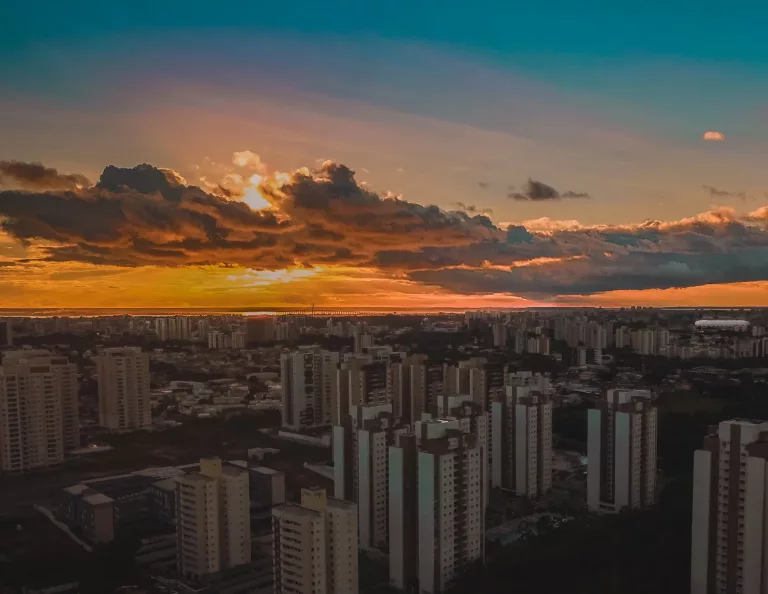
Ecolodges in the jungle with all inclusive experiences.
Visiting giant trees like the Saumama or spotting wild animals and birds, and learning about indigenous communities and their traditions. On the other hand , in the dry season (June to October), it is possible to take various walks that in the rainy season are under the river.
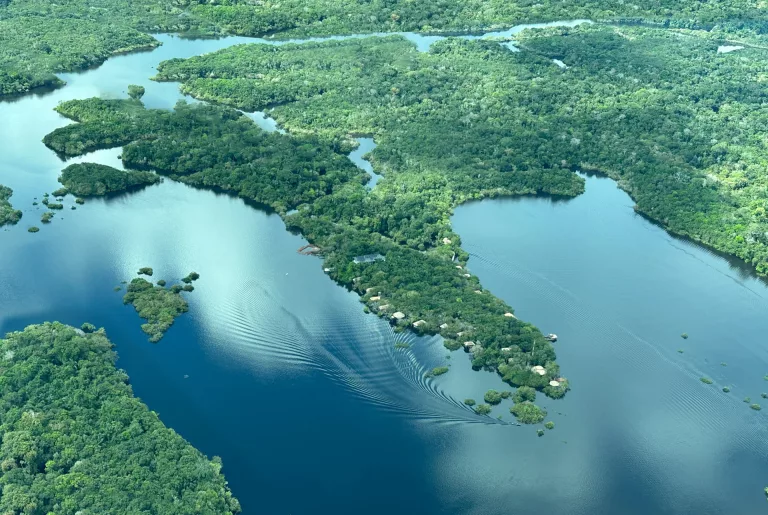
Explore Rio Negro
Embark on a 3-, 4-, or 5-day cruise sailing the waters of Rio Negro and admire its natural beauty. You can swim with dolphins, see caimans and piranhas, and go for magical walks to learn about medicinal plants. At night, you will sleep on board the boat.
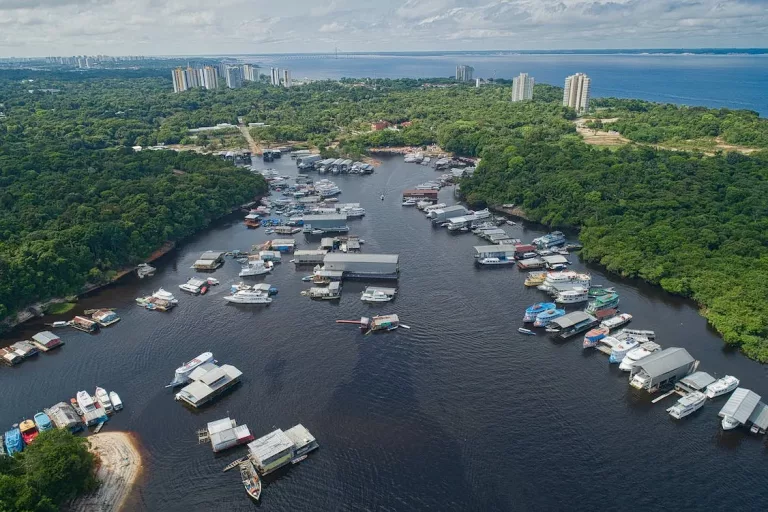
Have a survival experience in the Amazon rainforest.
Camp in hammocks with mosquito nets for 3 to 7 days and experience life in the jungle. This is a great way to learn about the flora and fauna of the Amazon rainforest and have a unique life experience.
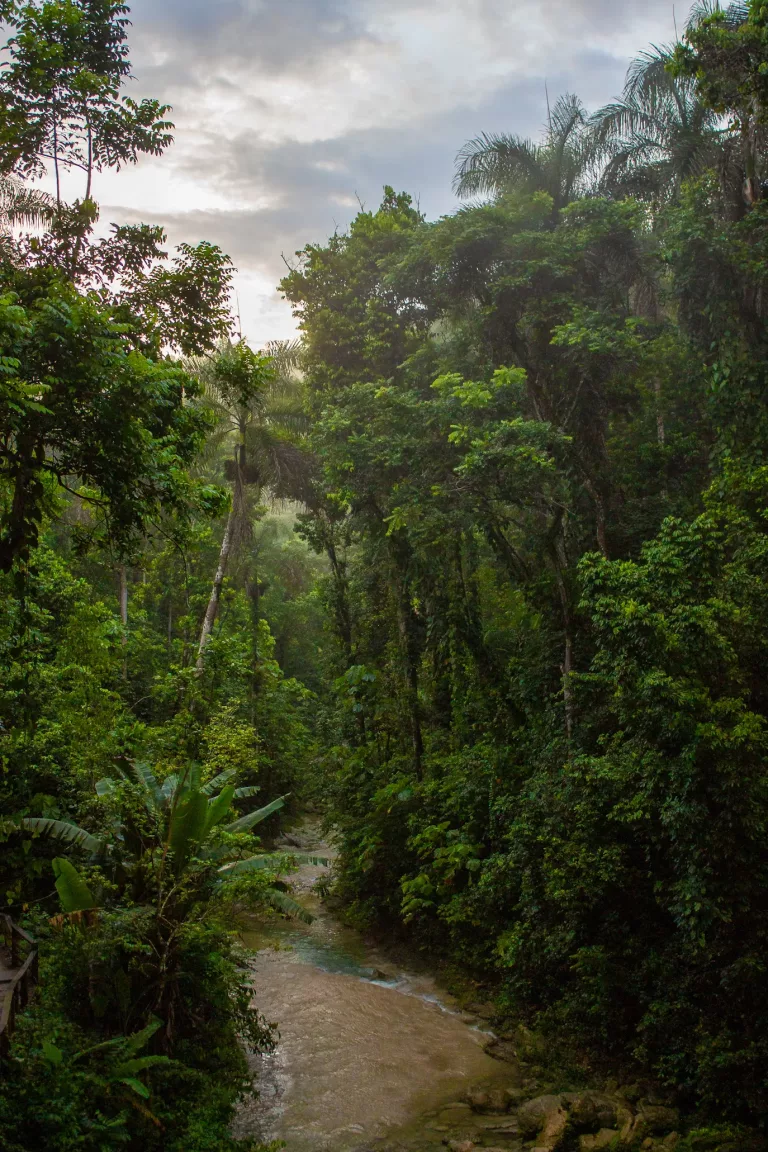
Kayaking Trip:
Explore the Amazon by kayak, camping in hammocks with mosquito nets. A paddle trip unforgettable for sure.
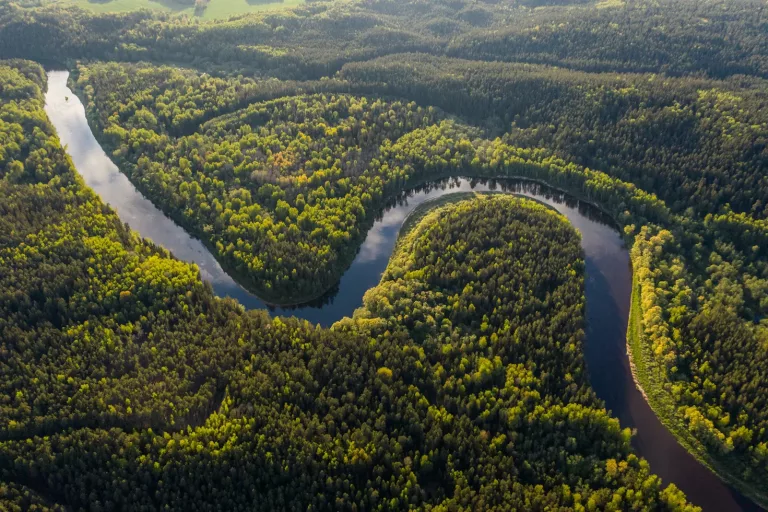
National floresta Tapajos
In a full day trip, you will travel by boat in the conservation unit of Tapajos River, where you will meet and be welcomed by the locals who practise community tourism. In this unique experience you can learn about their handicrafts (experts in rubber), and also go for hikes to the giant Saumamas or sail through freshwater springs.
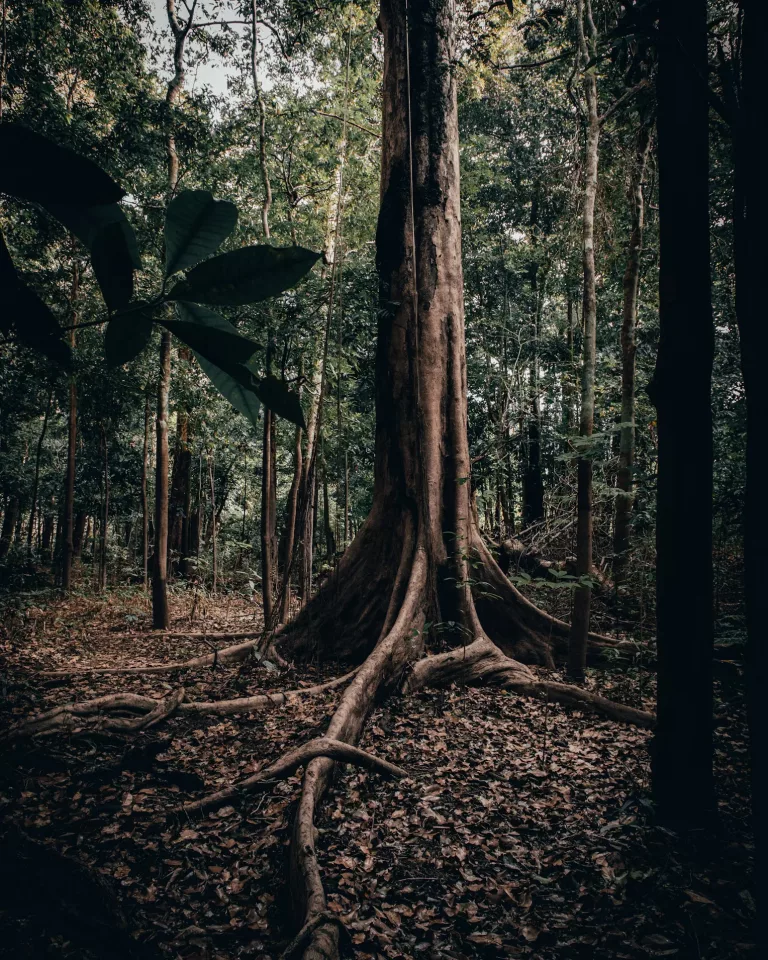
Canal de Jari
In a full day tour, you can visit this canal that connects the Rio Tapajos with the Amazon. Here it is possible to meet sloth bears, dolphins and monkeys from a very close distance. You can also enjoy the culinary wonders of the Victoria Regia plant.
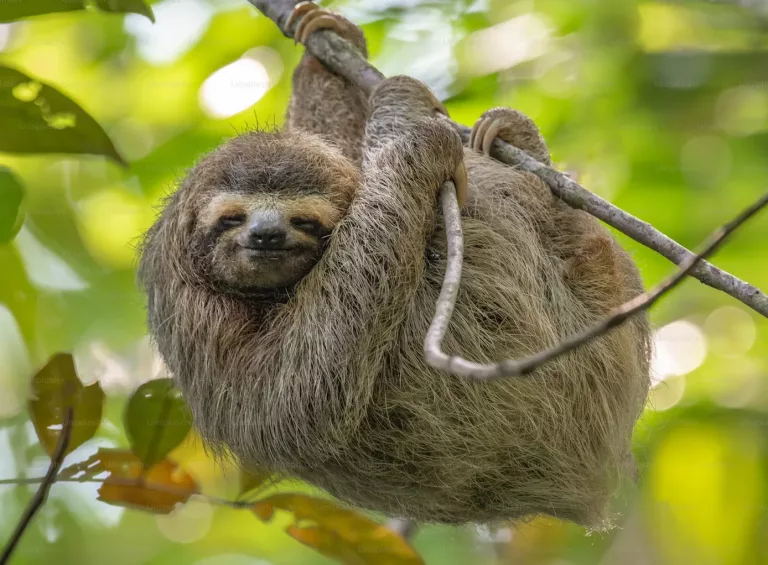
Floresta Encantada, Ilha do Amor and Serra da Piroca
In a one day tour, you can combine visiting these 3 places which are postcards of Alter do Chão. The view from the top of Serra da Piroca is unforgettable.
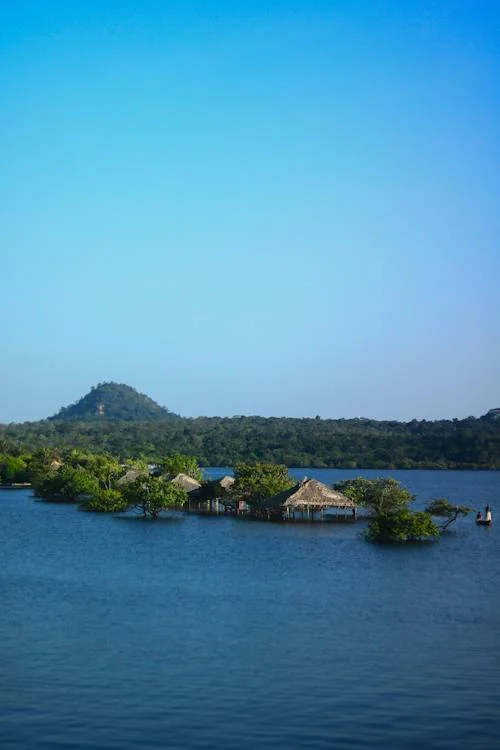
Ayahuasca ceremonies
A meeting with the “Queen of the Forest”. This sacred medicine is used by a large part of the Brazilian population, whether in shamanic rituals or as part of the “Santo Daime” religion. You will be able to experience this medicine with Paulo Brasil, with more than 20 years of experience in producing and offering ayahuasca. You will also spend the day in the place where this sacred plant is grown and processed.
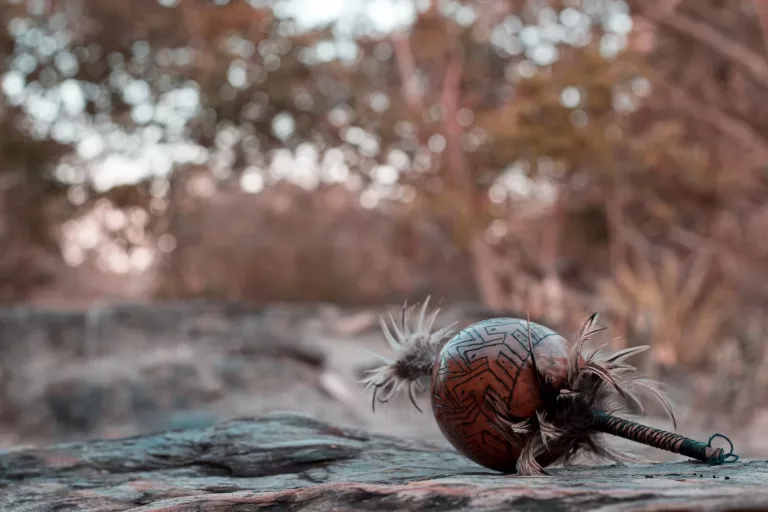
Multi-day experiences in the jungle with hikes and wildlife watching.
Programs with everything included from and to Iquitos hotel or airport.

Ayahuasca Ceremony
An inside journey with tea that is the heritage of the Amazonian peoples. Shamans for hundreds of years have known how to help their tribes by creating this tea based on leaves and lianas. Ayahuasca helps us to listen to the message of Mother Earth.

Full Day Native Communities
In a full day you will visit the Bora and Kukama communities. You can also go in search of dolphins, fish piranhas or visit a butterfly conservation center.
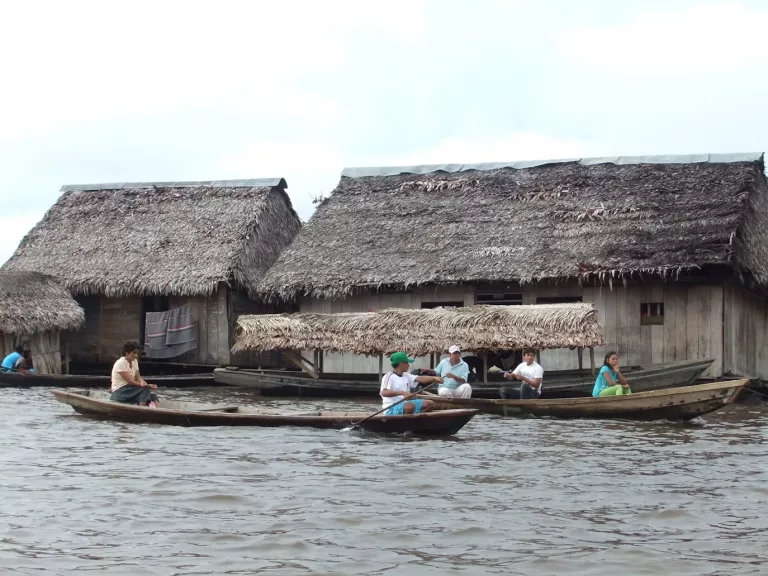
Full Day Native Fauna
In a full day you can visit several animals and have incredible views of the Amazon basin. You can visit a breeding ground of lizards, piranhas, paiches, victoria regia and turtles. You can also visit a serpentarium.
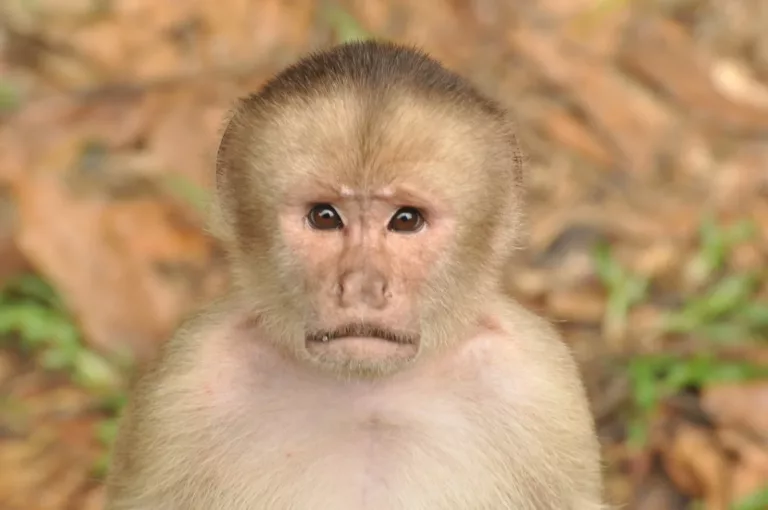
All-inclusive multi-day experience
You can go deep into the heart of the jungle with simple accommodations but in a very rich natural environment.
Venture deep into the heart of the jungle and get a chance to soar through the tree-tops on a zipline; walk across a canopy bridge dozens of metres in the air; kayak along the powerful Madre de Dios River and trek through Monkey Island in search of – you guessed it – monkeys!
If you are not the adventurous type, there are plenty of fairly soft jungle treks you can do, while discovering and learning about local flora and fauna.
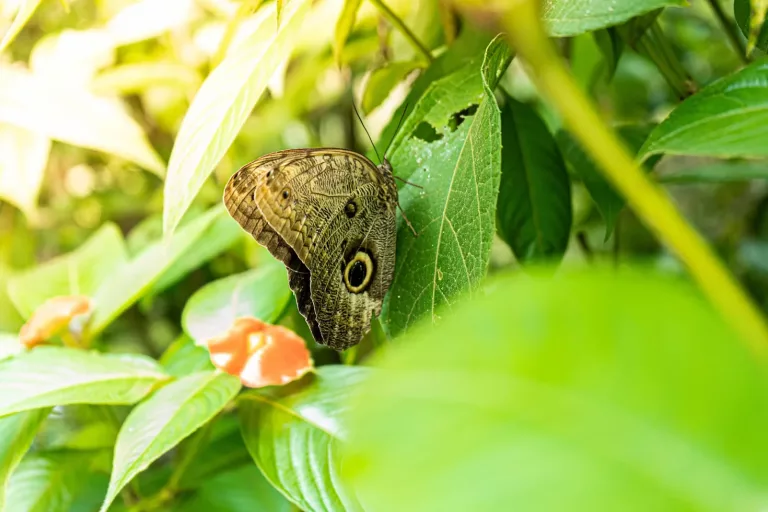
Bird-Watching at the Clay Lick
A clay lick looks like a miniature cliff made of clay and other minerals, which attracts birds who nibble or lick it in order to consume its nutrients. You’ll get a much more scientific description when you do the tour but this will do for now. Every morning hundreds of beautiful macaws, parrots and parakeets visit this natural wonder, creating a colourful spectacle unlike any other you’ve ever seen. It is so incredible, in fact, that it makes it worth waking up at 4:30 in the morning. The clay lick in the Puerto Maldonado area is known as one of the best bird watching spots in the world.
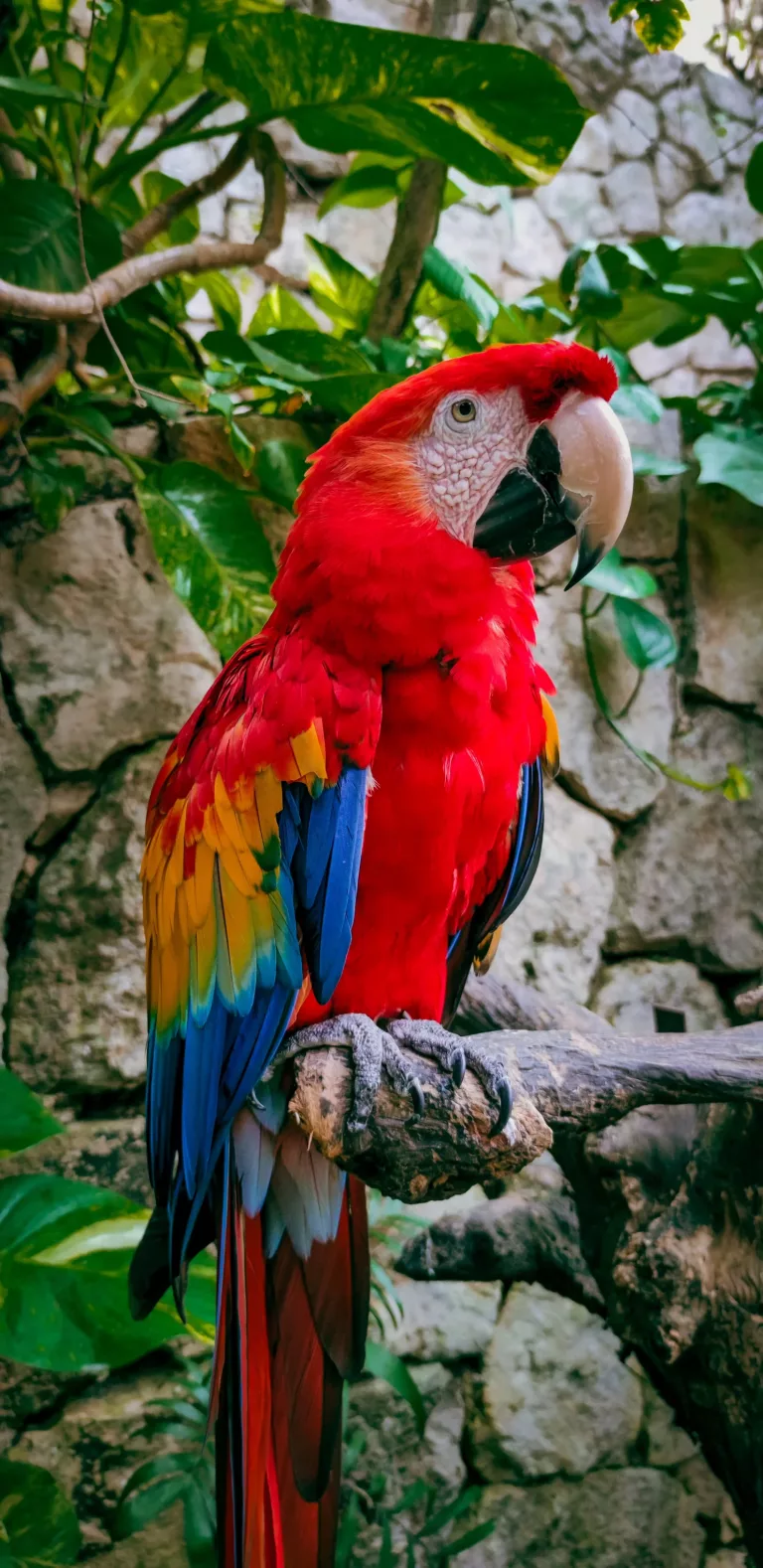
Lago Sandoval
During a tour to Lake Sandoval, you will travel to the immense lake and sit in a boat as you float on its serene water. If you’re an animal enthusiast then this excursion is second to none, as you will be getting up close and personal with all kinds of exotic creatures, including birds, monkeys and sloths. However, while animal-spotting is exciting and makes for some great memories, perhaps the best thing about this tour is the silence.
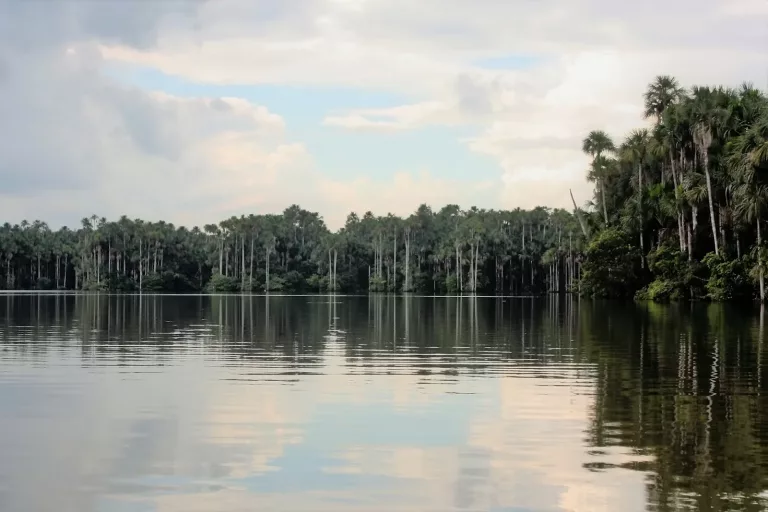
Caiman Spotting
If a full day tour is too much for you but you still want to get out of the town for a bit, Caiman Spotting is ideal. This excursion only lasts an hour or two and involves cruising along the Madre de Dios River in search of the majestic caiman. There are four different types of Caiman that reside in the Puerto Maldonado area but don’t expect to spot them all. Expect, however, to spot at least one caiman on your tour as your guide has expert eyes that can pick out these creatures in the darkness from a mile away.
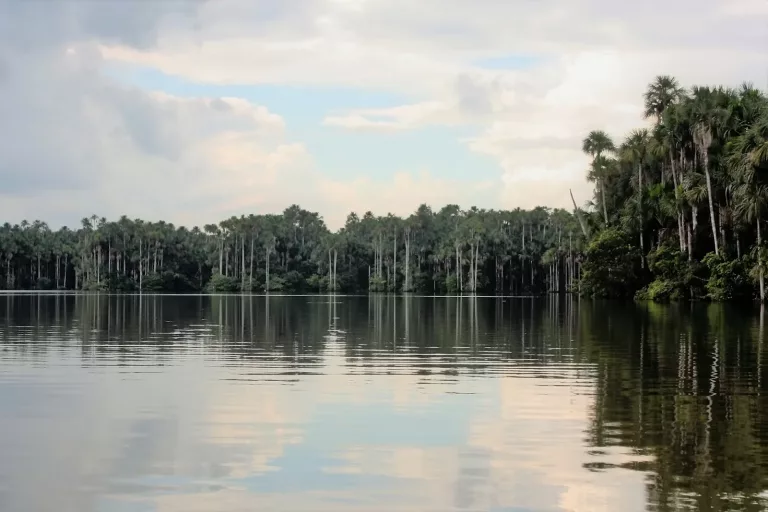
Monkey Island
Touring the Isla de Los Micos is one of the most engaging activities of the Amazon region. You will walk through trails whilst learning about the different species of monkeys that live there. But the most fantastic thing is that these beautiful and curious little animals are very relaxed around humans, which makes the experience incredible.
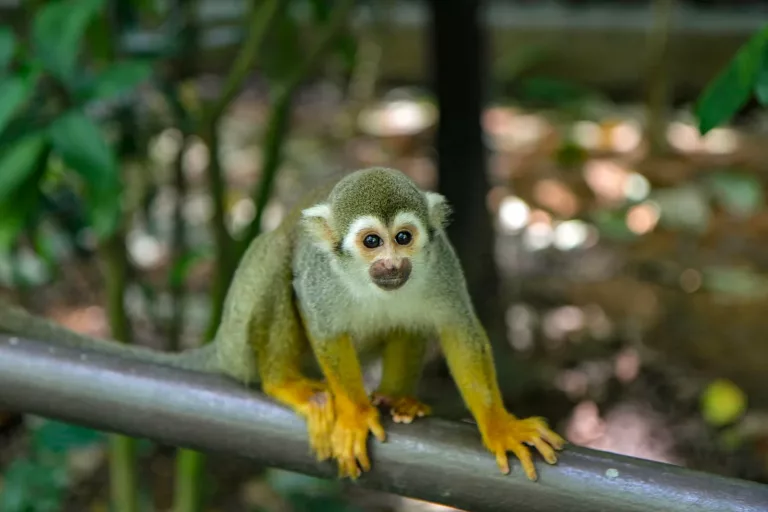
The Cahuinarí National Natural Park
The essence of the Colombia rainforest can be found in this beautiful territory whose total area amounts to 575,500 hectares. It is one of the most well-preserved forests in the Colombian Amazon. Flowing rivers, blackwater lakes, trees over 40 meters high and a rich floristic, are home to a great diversity of animal species. Here you can take part in activities such as the observation of black caimans and Pre-Hispanic Petroglyphs.
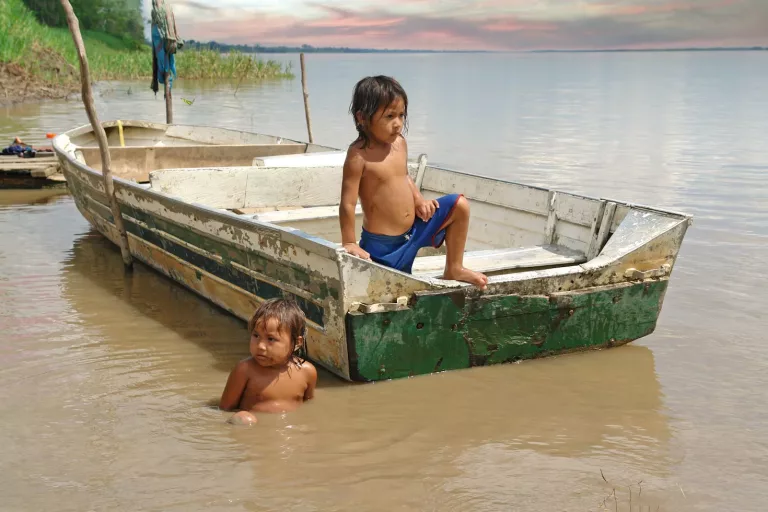
Stroll through El Parque Mundo Amazónico
This park is located at kilometre seven, just outside Leticia, and is a surprising place where you can learn a lot about native medicinal plants and indigenous traditions of the Colombia rainforest. El Parque Mundo Amazónico is a place for the whole family, and you can choose between ecological walks with guides, visit the botanical gardens, ecotherapy tour and much more.
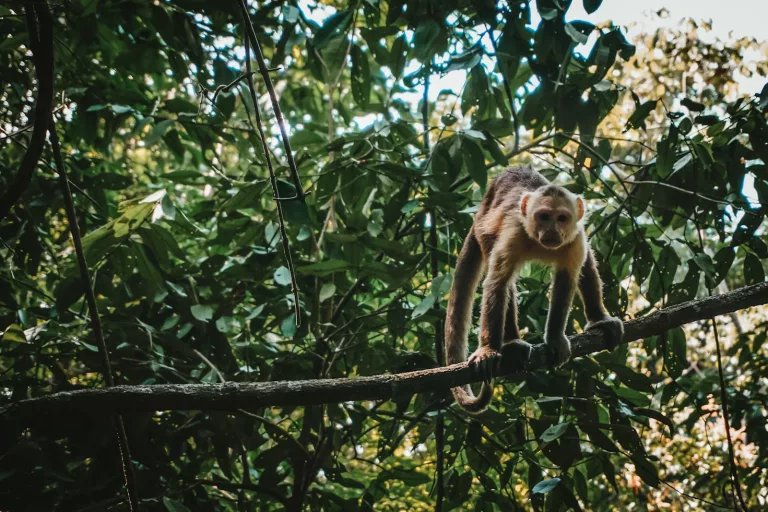
Visit Puerto Narino and Tarapoto Lake
Puerto Narino is a lovely little Indigenous village located around 2 hours north of Leticia by boat and is an extremely popular place to get away from the city for a few days and enjoy some peace and quiet. It’s also the staging point for a visit to Tarapoto Lake, a RAMSAR wetland area, and the best place in the region to see wild pink river dolphins.

Visit the Flor de Loto Nature Reserve
If you want to know and admire the largest lotus in the world, and the Victoria Regia, plant from which the lotus flower is born, you must go to this natural reserve located 25 minutes from Leticia. Here you can enjoy all the fauna and flora by canoeing in the park or hiking.
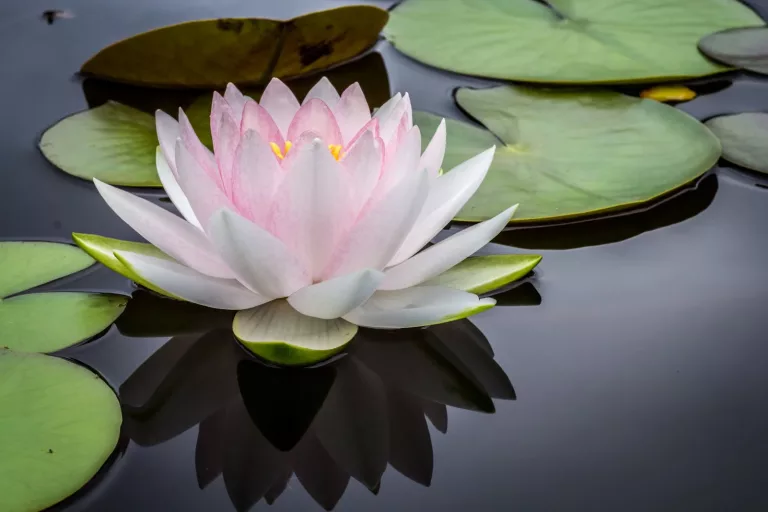
Amacayacu National Park
Located in the “Amazon trapezoid”, this park can be reached by boat from Leticia and spans about 293.500 hectares. It is home to more than 5,000 plant species and nearly 470 bird species. You will have the chance to meet the Ticuna people, who cooperate with the park and share with you their experiences in the jungle. There are also many hiking trails and some observation spots where you can see species that are in danger of extinction.
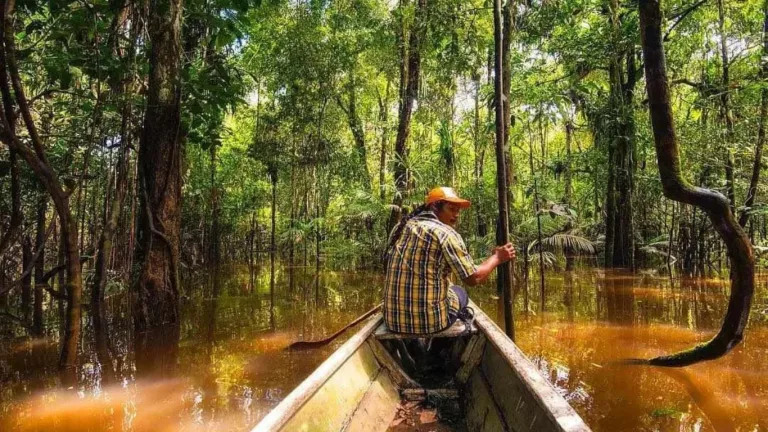
Eco lodges owned by indigenous in Madidi Jungle
Sustainable tourism in this incredible national park. All-inclusive experiences so you only have to embark on the adventure.
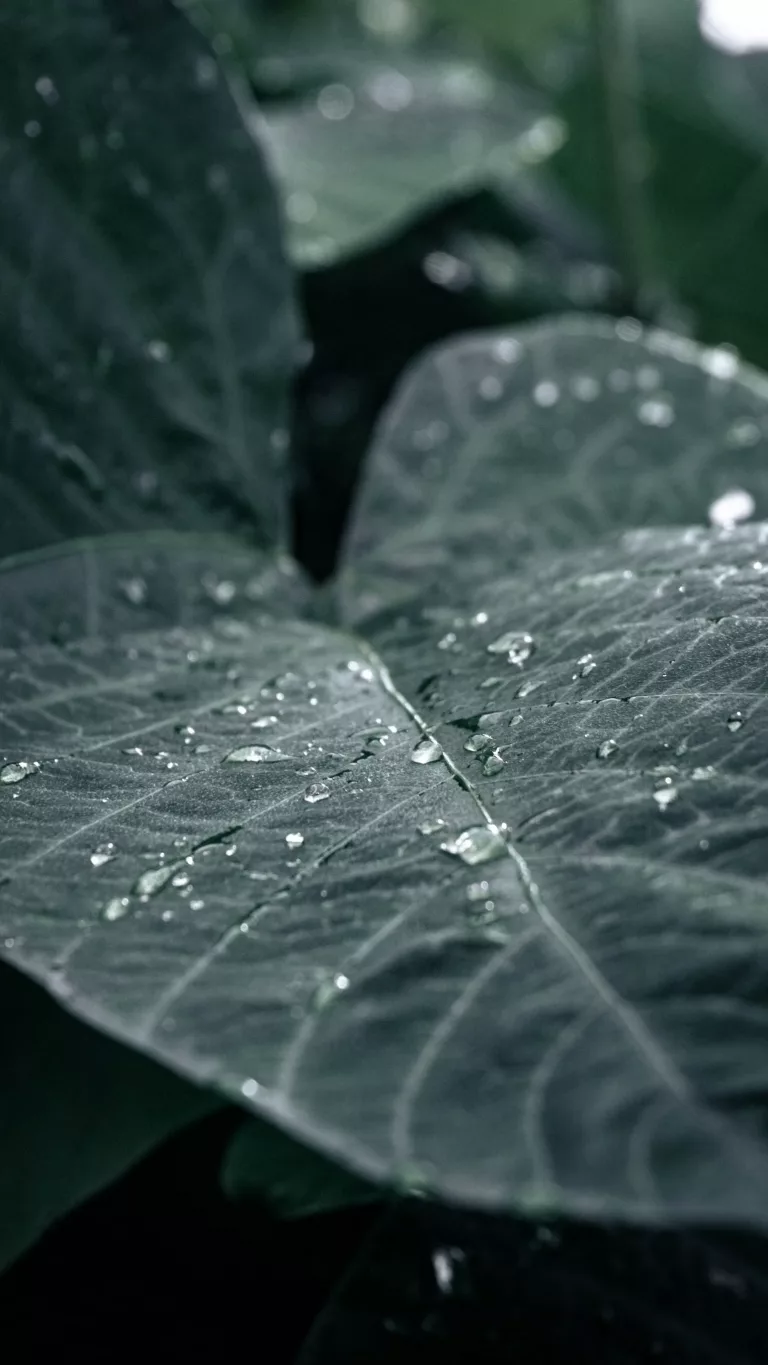
Multi Days Experience in Pampas del Rio Yacuma
Also known as the Bolivian Pantanal, it offers extraordinary flora and fauna and it is possible to swim with pink dolphins.
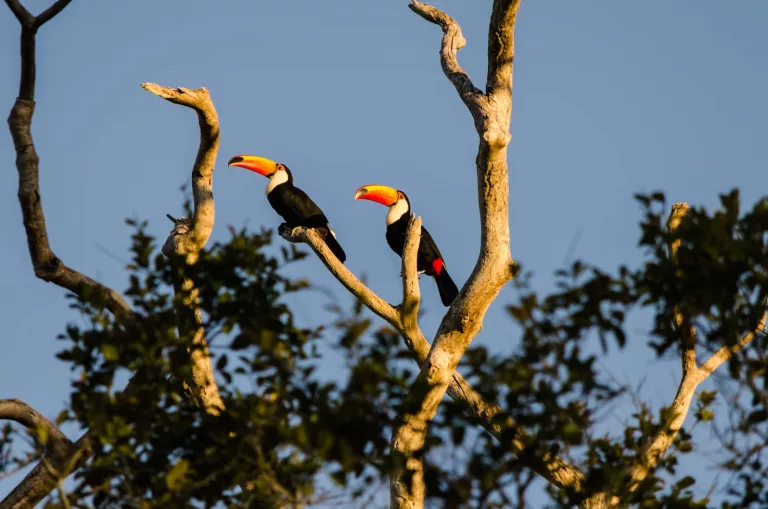
Yasuni National Park
Multi days experiences in the jungle. You can learn about the flora and fauna of this park while learning about the cultures of its people. Sleeping in eco lodges.
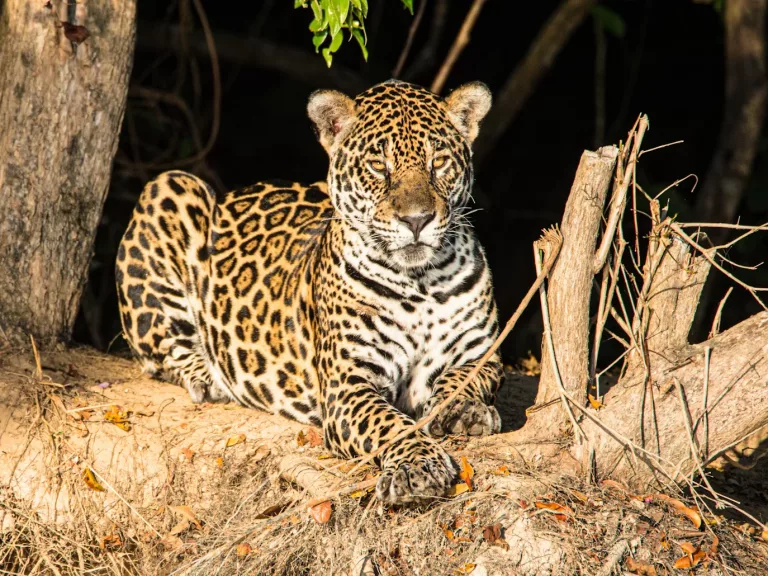
Etnoturismo
The Yasuni National Park rainforest is home to 2 different indigenous cultures: the Waourani and Kichwa people. No visit would be complete without experiencing local life in a forest community.
The Waourani (or Huaroani) were traditionally forest hunter-gatherers. Their way of life changed dramatically when missionaries and oil companies reached them over the past century. Today, just two of the Waourani sub-tribes, the fierce Tagaeri and Taromenane, choose to live in isolation from the modern world. The remaining Waourani have given up their nomadic ways to live in small communities within Yasuni. The Waourani territories are to the west side of the national park.
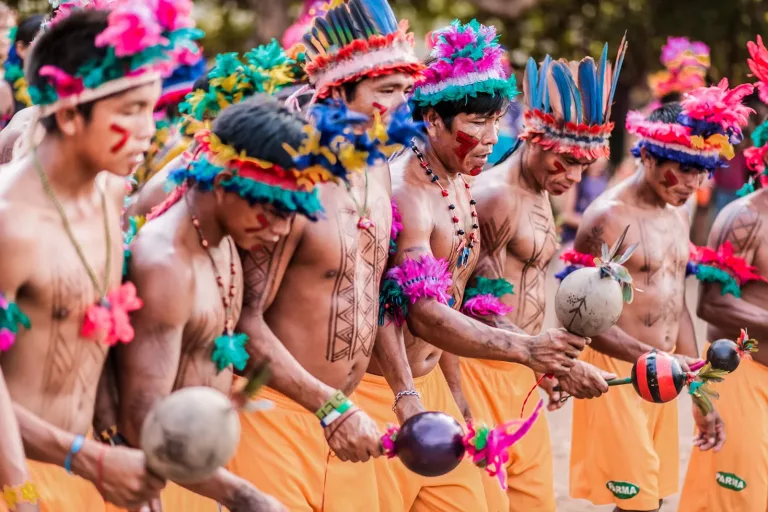
Cuyabeno Reserve
Multidays experience with all inclusive.
